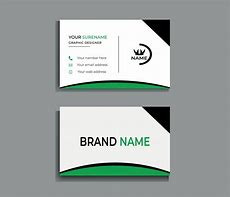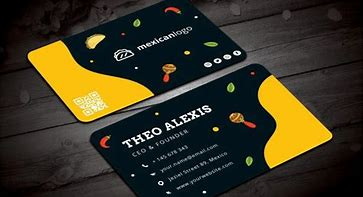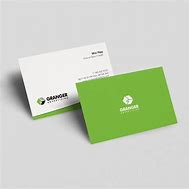Content Menu
● Understanding the Purpose of a Business Card
● Key Elements to Include on Your Business Card
>> Your Name
>> Job Title or Position
>> Contact Information
>> Company Logo
>> Tagline or Slogan
>> Call to Action
● Design Considerations for Your Business Card
>> Size and Shape
>> Color Scheme
>> Typography
>> White Space
>> Material and Finish
● Tips for Making Your Business Card Stand Out
● Common Mistakes to Avoid
● Conclusion
● Frequently Asked Questions (FAQs)
>> 1. What should I include on my business card?
>> 2. What size should my business card be?
>> 3. How do I choose the right color scheme?
>> 4. Should I use both sides of my business card?
>> 5. How can I make my business card memorable?
Creating an effective business card is essential for networking and establishing a professional presence. A well-designed business card not only conveys your contact information but also reflects your brand identity and leaves a lasting impression on potential clients or partners. This article will guide you through the process of writing and designing a business card, ensuring it stands out while remaining functional.

Understanding the Purpose of a Business Card
Before diving into the design and content, it's crucial to understand the purpose of a business card. A business card serves several functions:
- Contact Information: It provides essential details such as your name, phone number, email address, and website.
- Brand Representation: It reflects your brand's identity through design elements like logo, colors, and typography.
- Networking Tool: It acts as a tangible reminder of your interaction with someone, making it easier for them to remember and reach out to you.
Key Elements to Include on Your Business Card
When crafting your business card, certain elements are essential to ensure clarity and effectiveness:
Your Name
Your name should be prominently displayed on the card. This is the first piece of information people will look for, so make sure it stands out.
Job Title or Position
Including your job title helps recipients understand your role within the organization. This can also establish credibility and context for your expertise.

Contact Information
This includes:
- Phone number
- Email address
- Website URL
- Social media handles (if relevant)
Make sure this information is accurate and up-to-date.
Company Logo
Incorporating your company's logo helps reinforce brand recognition. Place it in a prominent position on the card without overwhelming the other information.
Tagline or Slogan
If applicable, adding a tagline or slogan can succinctly convey what your business does or its unique selling proposition.
Call to Action
Consider including a call to action that encourages recipients to take the next step, such as visiting your website or contacting you for more information.
Design Considerations for Your Business Card
The design of your business card is just as important as the information it contains. Here are some key design considerations:
Size and Shape
While standard business cards typically measure 3.5 x 2 inches, you can experiment with different sizes and shapes to stand out. Just ensure that they fit comfortably in wallets or cardholders.
Color Scheme
Choose colors that align with your brand identity. Consistency in color usage helps reinforce brand recognition.
Typography
Select fonts that are legible and reflect your brand's personality. Avoid overly decorative fonts that may hinder readability.
White Space
Don't overcrowd your card with information; use white space effectively to create balance and enhance readability.
Material and Finish
Consider using high-quality materials and finishes that reflect the professionalism of your brand. Options include matte, glossy, textured, or even unconventional materials like metal or wood.
Tips for Making Your Business Card Stand Out
To ensure your business card captures attention, consider these additional tips:
- Unique Shapes: Experiment with non-traditional shapes to make your card memorable.
- Textured Finishes: Adding texture can create an engaging tactile experience.
- QR Codes: Including a QR code can direct recipients to your website or social media profiles easily.
- Testimonials: If space allows, consider adding a short testimonial from a satisfied client to build credibility.
Common Mistakes to Avoid
While designing your business card, be mindful of common pitfalls:
- Overloading Information: Too much text can overwhelm recipients; focus on key details.
- Neglecting Quality: Cheap materials can diminish the perceived value of your brand.
- Ignoring Audience Preferences: Tailor your design to resonate with the target audience rather than personal preferences alone.
Conclusion
Creating an effective business card involves careful consideration of both content and design elements. By incorporating essential information while ensuring an appealing aesthetic, you can create a powerful networking tool that leaves a lasting impression on potential clients and partners.

Frequently Asked Questions (FAQs)
1. What should I include on my business card?
Your business card should include your name, job title, contact information (phone number, email), company logo, and possibly a tagline or call to action.
2. What size should my business card be?
The standard size for business cards is 3.5 x 2 inches, but you can choose different sizes or shapes that fit within wallets while standing out visually.
3. How do I choose the right color scheme?
Select colors that align with your brand identity and ensure they complement each other for visual harmony while maintaining readability.
4. Should I use both sides of my business card?
Using both sides can maximize space for additional information or design elements but ensure that it doesn't clutter the overall look.
5. How can I make my business card memorable?
Consider unique designs, high-quality materials, textured finishes, or incorporating QR codes to engage recipients further and encourage them to connect with you online.
































